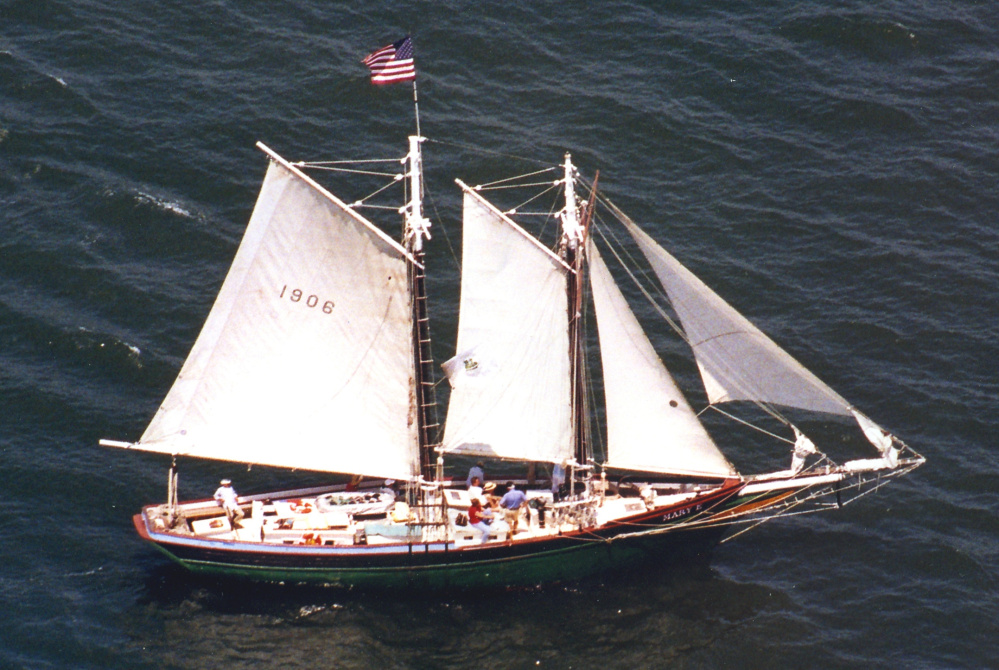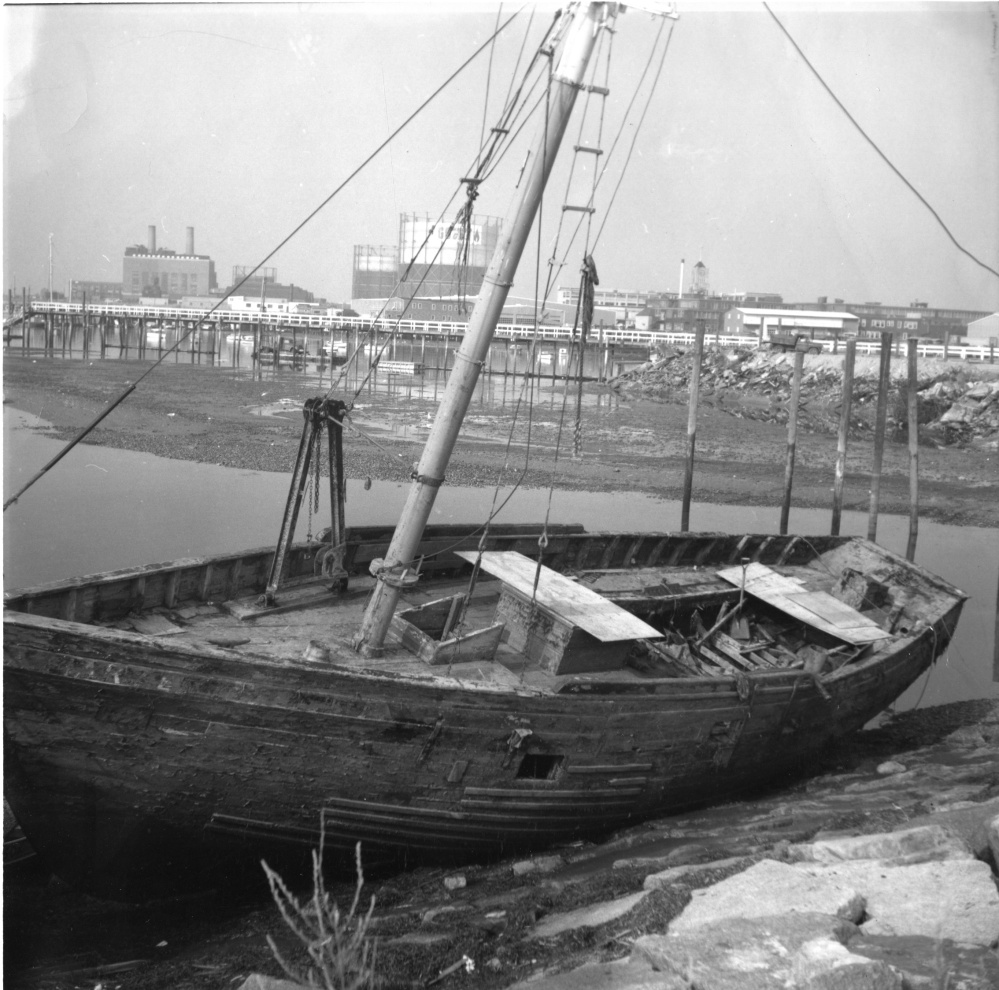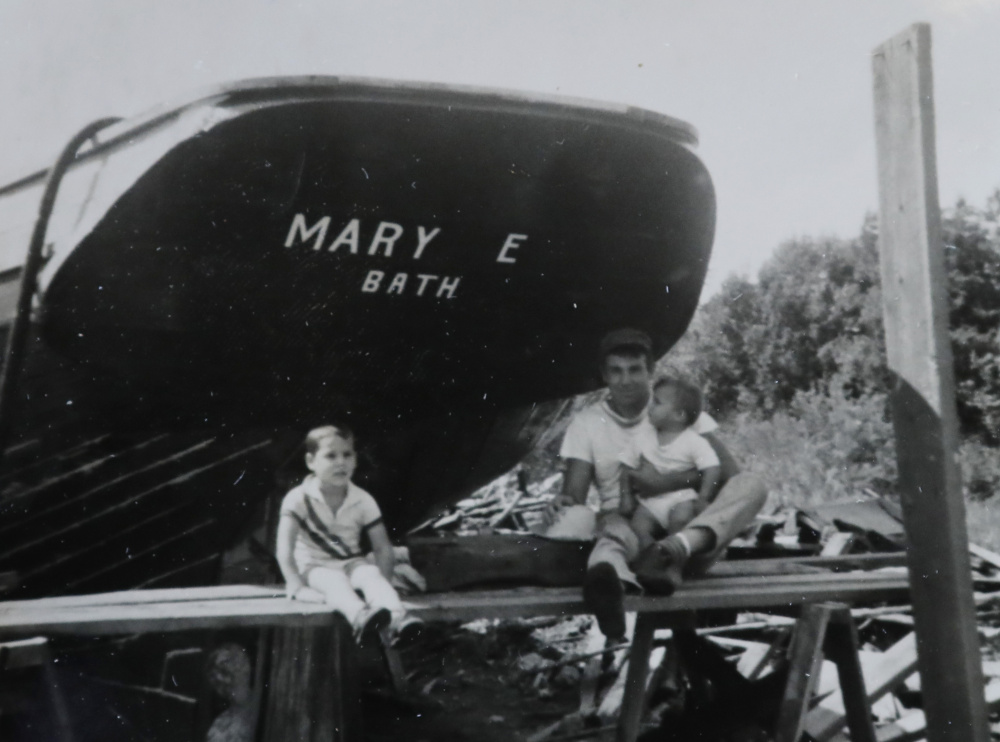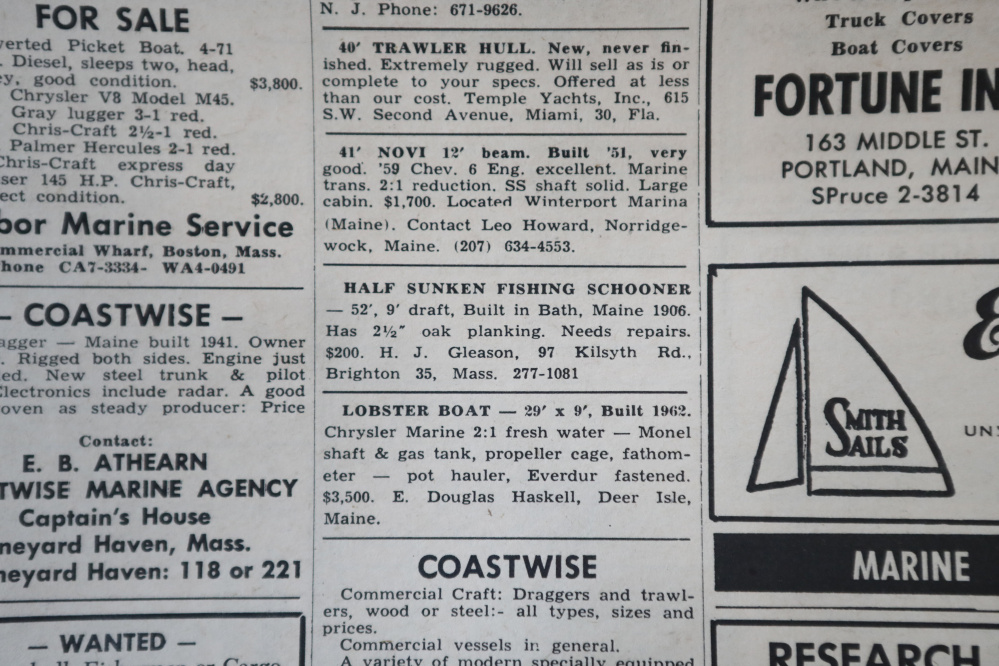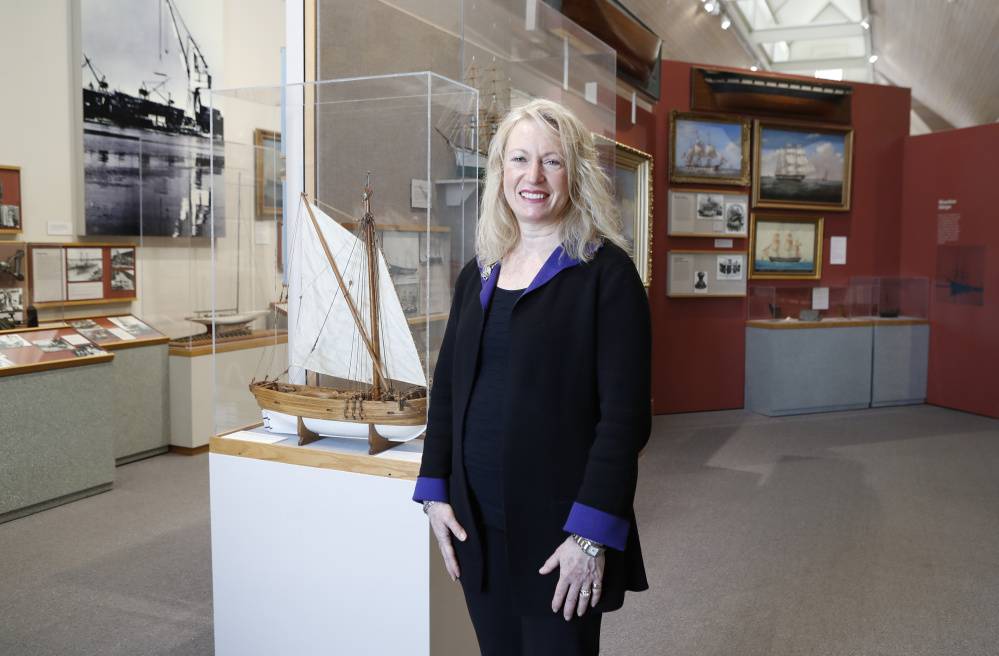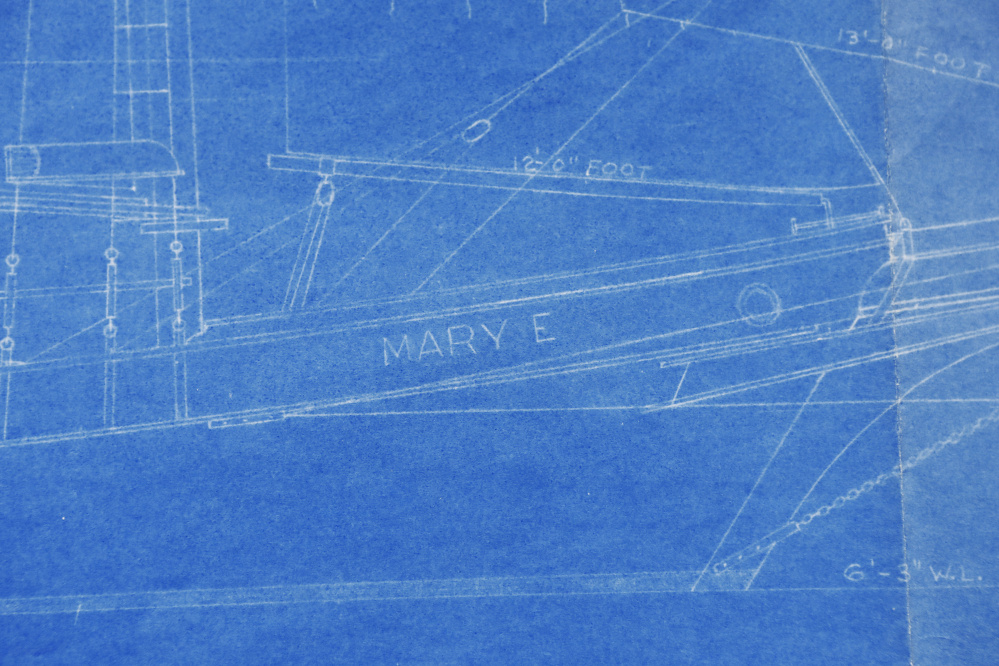BATH — A little more than 110 years after the schooner Mary E was launched here on the Kennebec River, the oldest Bath-built wooden vessel known to be still afloat will soon return home for good.
The Maine Maritime Museum is set to acquire the Mary E, a two-masted clipper built by shipwright Thomas E. Hagan in 1906, later this month from its current owner, Matt Culen of Pelham, New York.
The museum has raised $350,000 of the $1.5 million needed to buy the boat, complete its restoration and maintain the historic vessel as a public exhibit in perpetuity. A campaign to raise the rest will begin soon.
“Our goal is to sail her from time to time for special events and have her be an ambassador for the museum and for the city of Bath,” said Amy Lent, the museum’s executive director.
The pending purchase of the Mary E – also thought to be the oldest Maine-built fishing vessel that’s still sailing – will fulfill the museum’s long-standing goal to acquire a large, locally built sailing ship to top its collection of more than 100 smaller vessels.
It also will be the second time that the Mary E comes home for repairs – the first was after the boat sank during a Thanksgiving Day hurricane in 1963 in Lynn Harbor, Massachusetts.
The 73-foot-long schooner is scheduled to be delivered in April to the waterfront museum, where a six-month restoration effort on the banks of the Kennebec will give the public an opportunity to see traditional shipbuilding techniques. While the Mary E is Coast Guard-certified as seaworthy, thanks to recent below-deck restoration work done by Culen, wooden decking, bulwarks and deck houses must be replaced.
“We’re hiring a shipwright and his team to do the work,” said Kurt Spiridakis, a museum staff member who will oversee the restoration. “There will be a variety of ways for the public to learn about and interact with the exhibit.”
ONGOING EDUCATIONAL EXHIBIT
The Mary E will return to the water in the summer of 2018 and be docked at the museum, where it will be open for tours as part of an ongoing educational exhibit.
Though the Mary E is small compared to other schooners, it represents fishing vessels that were seen everywhere along the Maine coast in the early 1900s. Lent described it as the Ford Ranger of boats.
“This is a vessel of remarkable importance, despite its modest size,” said Nathan Lipfert, the museum’s senior curator. “We have compiled a list of historic Maine vessels that are still extant, and there is nothing older or better that is available to us.”
The Mary E was the last of 69 boats built by Hagan, in a Houghton shipyard where Bath Iron Works stands today. The first owners were four fishermen who sailed out of Block Island, Rhode Island, one of whom had a wife named Mary E. They operated it for 38 years as a fishing and trade vessel, including a likely stretch as a rum runner during Prohibition.
In 1944, they sold the Mary E to a fisherman in Gloucester, Massachusetts, who installed a bigger engine and used it as a dragger. By 1960, the Mary E was abandoned. Three years later it was mired in the mud of Lynn Harbor.
In 1965, Bill Donnell, a local schoolteacher and descendant of Bath shipbuilders, saw an advertisement in National Fisherman for a “Half Sunken Fishing Schooner…Built in Bath, Maine…Needs repairs. $200.” With loans and other help from friends, Donnell purchased the boat, brought it back to Bath and spent the next three summers refurbishing the Mary E on land near the Donnell homestead where the Maine Maritime Museum is now located.
When the Mary E was seaworthy again, Donnell sailed the schooner as a passenger vessel for a few seasons out of Rockland Harbor and around Penobscot Bay.
Researchers believe the Mary E was the first historic schooner to be Coast Guard-certified, paving the way for the Maine Windjammer Fleet that operates today.
FAR-FLUNG SAILING HISTORY
Donnell, who died in 2009 at age 78, sold the Mary E in 1971, after which it sailed from harbors in New York, Long Island and Key West, Florida. Culen bought the schooner in 2006 and began a major restoration with the Long Island Maritime Museum. More recently, he ran summer tours from the Connecticut River Maritime Museum.
Culen contacted the Maine Maritime Museum last May, hoping to find a willing buyer and a permanent home for the Mary E. The museum sent a few staff members to check it out.
“We get a fair amount of offers like this and often they’re too big or too far gone,” Lent said. “This one seemed to have some real possibilities. And when they saw her, she looked as good in real life as she did in pictures.”
Except for some rotted decking and other features, the Mary E is in good shape. Museum staff members are researching all they can to learn how the schooner was built and used through the years.
Donnell’s sister, Mary Elizabeth Burchard, has provided a collection of photographs and articles documenting her brother’s effort in the 1960s. Burchard, who is 81 and lives in Salisbury, Vermont, remembers how hard her brother worked on the Mary E. She enjoyed sailing on the schooner with him and she hopes to be one of the first passengers when the restored boat launches in 2018.
“He had a passion for that style of boat and he felt a strong connection to his shipbuilding ancestors,” Burchard said. “I think he would be absolutely delighted to see her back on the Kennebec River again.”
Send questions/comments to the editors.


